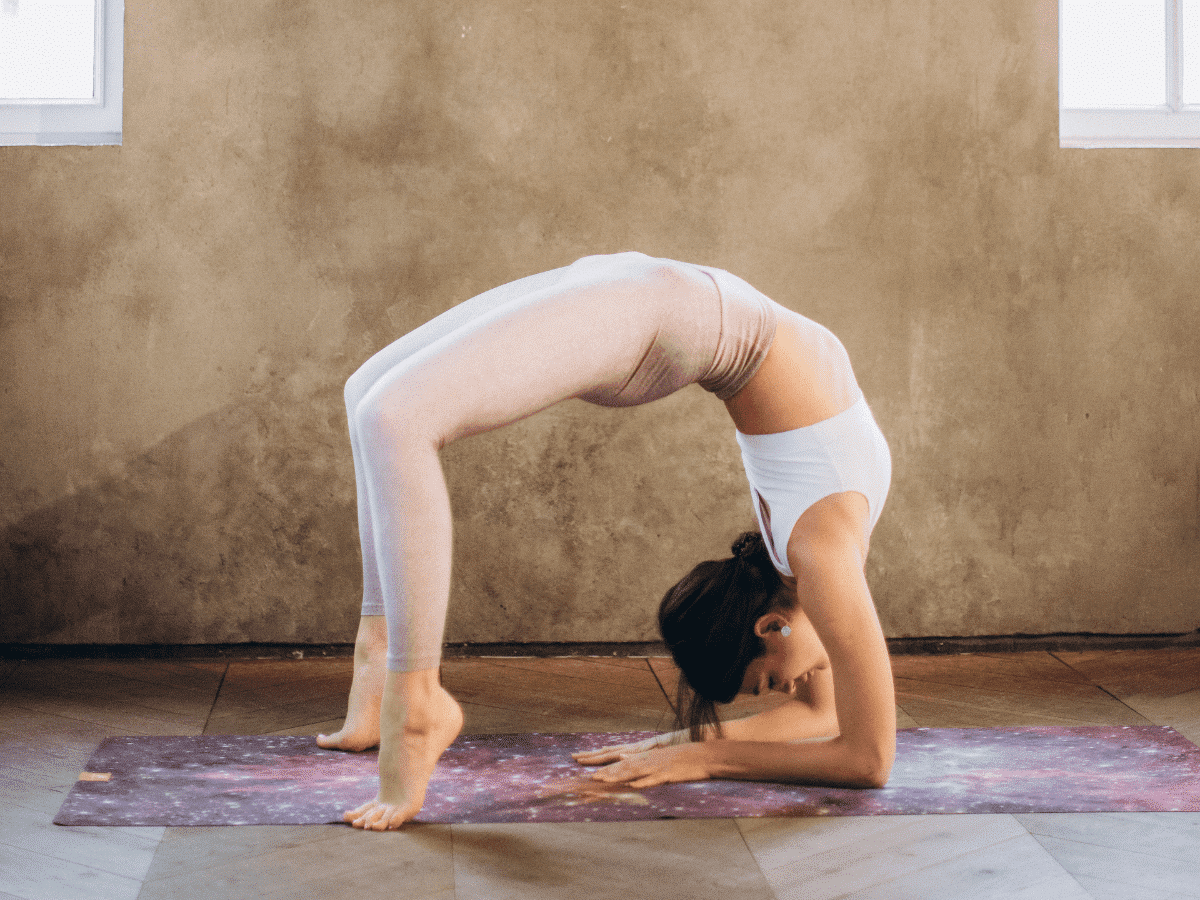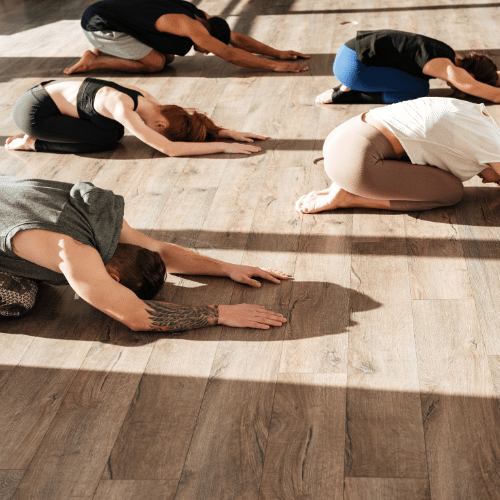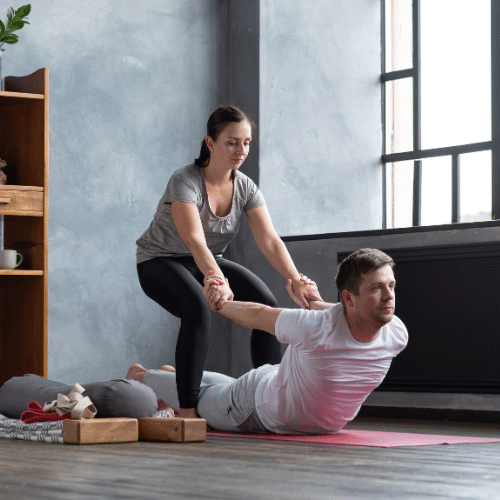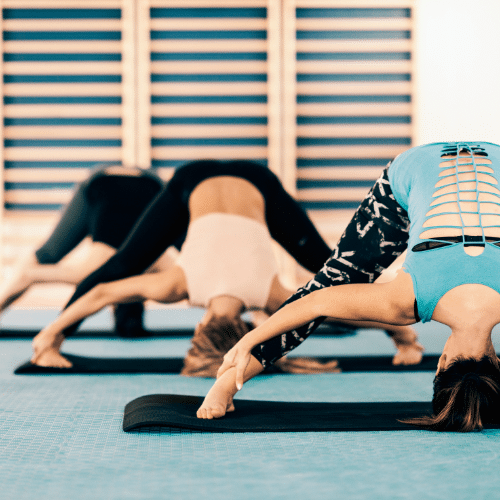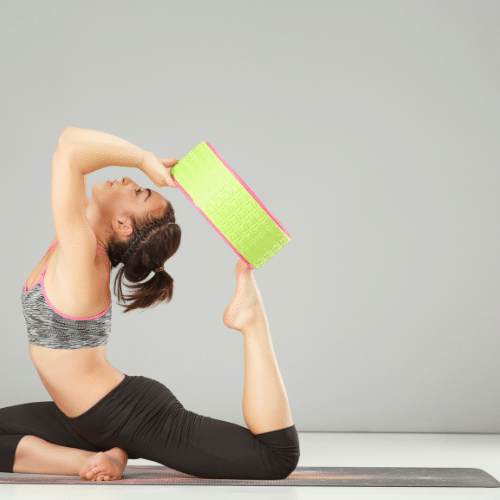Backbends are a great way to challenge your body and break through barriers. They require strength, flexibility, and balance—but with the proper preparation, anyone can do them! This article will discuss how to properly prepare your body for backbends and common mistakes to avoid. So if you’re ready to take on this exhilarating exercise and reach new heights of flexibility, read on!
What Is A Backbend?
A backbend is a yoga pose that involves arching the spine and bending backward to stretch the abdominal muscles and increase flexibility. Backbends can range from beginner poses such as cat-cow or cobra to advanced postures like wheel pose or urdhva dhanurasana (upward bow). Not only do backbends help to increase flexibility, but they also strengthen the core, shoulders, arms, and legs while providing a calming effect on the nervous system. For those looking to add backbends into their practice, it’s essential to warm up properly and listen to your body as you progress through each posture. Regular practice allows you to deepen your back-bending poses gracefully and effortlessly!
Backbending postures provide a great way to increase flexibility, strengthen the core and calm the nervous system. With dedication and commitment to your practice, you’ll be able to reap the benefits of backbends in no time! Get ready for your next challenge – learning how to properly prepare for backbends!
How To Prep For Backbends
Preparing for backbends is essential to ensure that you can practice safely and without injury. Before beginning a backbend, it’s vital to warm up the body and get into a state of mental focus. Before attempting a backbend, it’s essential to properly prepare your body. Here are five steps you can take:
1. Loosen up your hip flexors – Tight hip flexors can cause an overly deep backbend, which puts pressure on the lower spine. Try some hip-opening stretches such as Pigeon Pose and Happy Baby Pose to loosen them up.
2. Strengthen the shoulders – Strong shoulder muscles support your body weight during backbends. Try doing planks or push-ups to strengthen the shoulder area before bending backward.
3. Strengthen your core – A strong core is essential for stabilizing your spine in backbends and keeping it safe from injury. Work on strengthening exercises like side planks, boat poses, or mountain climbers to fire up your abs before you bend backward!
4. Lengthen the spine – Backbends require a lot of flexibility in the spine, so it helps to practice spinal lengthening poses such as cobra pose or upward facing dog before attempting a more advanced backbend pose like wheel pose or upward bow.
5. Practice breathwork – Breathwork is one of the most important aspects of any yoga practice; it helps keep us calm and focused while preparing our bodies for movement by increasing oxygen levels in our muscles and joints. Before doing any back bending exercise, focus on deepening your breath, connecting with each inhale, and exhaling through Ujjayi breathing (victorious breath).
Common Mistakes To Avoid When Performing A Backbend
Common backbend mistakes can be easily avoided with correct form and practice. Here are some common mistakes you should avoid when practicing your backbends.
1. Hyperextending your lower back: Hyperextension is a common mistake when performing a backbend. The error occurs when the lower spine is arched too much, resulting in overstretching or even injury of the lumbar region. When engaging in a backbend, keeping a gentle curve in the lower spine while maintaining an upright posture is essential.
2. Failing to engage the core: One major mistake is failing to engage your core muscles. Engaging your core muscles and actively using your abdominal muscles to support your spine and avoid hyperextension is important. Contracting your butt muscles (gluteus maximus) too intensely can tilt your pelvis up, which can compress your spine and hyperextend your lower back. It is important to only firm these muscles, as overdoing it will cause strain
3. Locking out elbows: It’s important not to lock out the elbows as this will cause strain on the joints and take away from the full range of motion you could achieve if you kept them slightly bent.
4. Incorrect splaying of the knees/feet: Splaying your knees and feet is an important technique when performing a backbend. This helps to open up the hip flexors, allowing for maximum flexibility. However, it can also cause compression in the lower back if done incorrectly. Keep your feet and legs parallel while engaging your core muscles and glutes to avoid this.
Avoid overstretching any part of yourself beyond what’s comfortable – this will only lead to injury down the line! Take it slow and focus on feeling each stage of your backbend as you progress through it. These common mistakes will become easier to recognize and work around with time and patience!
Backbend Modifications
Backbend modifications are essential for individuals with limited mobility, injuries, or other physical limitations preventing them from performing traditional backbends. By modifying the pose, individuals can still benefit from opening the chest and shoulders, strengthening the spine, and improving overall flexibility. Some modifications may include using props such as blocks or straps, performing the pose against a wall, or simply reducing the depth of the backbend.
Working with a qualified yoga instructor can help you ensure proper alignment and avoid further injury.
When practicing backbends, paying attention to your body and being mindful of any sensations you may feel is essential.
Pain or discomfort is a sign that you are pushing yourself too far and should take a break from the pose or modify it accordingly.
Backbends can be beneficial for both your physical and mental health. With time and patience, you can improve your flexibility and strength while avoiding common mistakes that could lead to injury. However, if you’re having trouble mastering backbends on your own, consider signing up for classes at Zuda Yoga. For just $40 you can access 40 days of classes. This is an excellent opportunity to take your practice to the next level. So, don’t wait – sign up for Zuda Yoga and watch your backbends soar!


